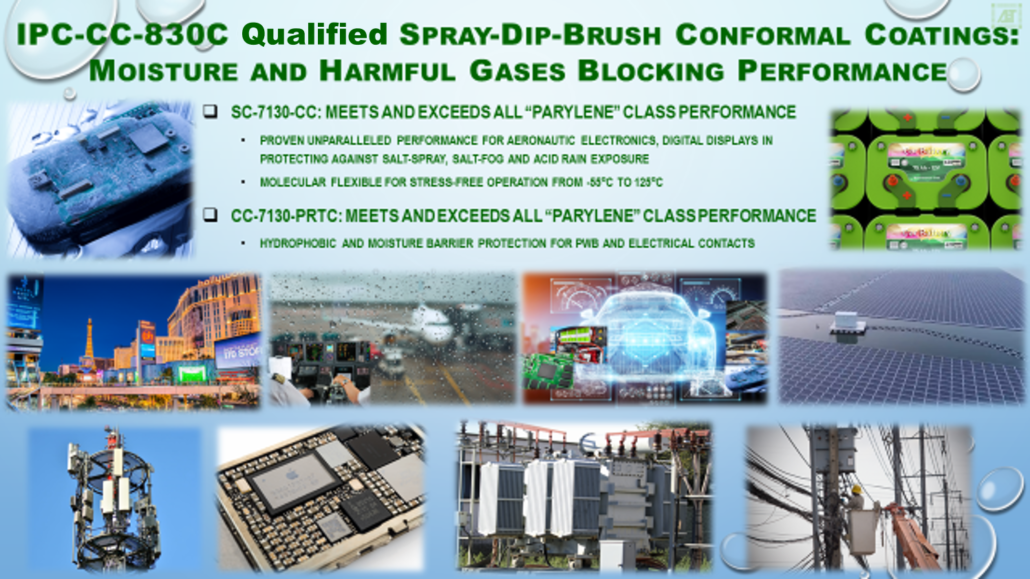Designed Polymer Molecular Structure for Conformal Coating for Optimized Printed Circuit Board Protection Against Outdoor and Extreme Elements
NEWS RELEASE: May 5, 2020, Princeton Junction, NJ
Today’s advanced electronics require protection to ensure the highest reliability even in extreme conditions. Their operational environments may expose electronics to high humidity, salt-fog and salt-spray, temperature variance or even thermal shock, and industrial atmosphere laden with corrosive gases like sulfur dioxide, hydrogen sulfide, nitrogen dioxide, etc. Millimeter frequency devices, like those used with 5G, feature fine-pitch components and leads separated by smaller, ever closing distance, creating a greater need for prevention of ionic migration. This protection must be cost effective and possess convenient ease of application for use in large scale electronic manufacturing used by large swaths of modern commercial electronics.
None of the existing types of conformal coating meet this list of requirements. AI Technology, Inc. is proud to announce its now market proven new types of conformal coating meeting all of the challenges in protecting outdoor electronics under extreme conditions.
SC7130-CC and CC7130-PRTC are new types of conformal coating that have been tested to have the same performance as Parylene under the IPC-CC-830C standards and categorization. They have the same thin coating of 12.5 µm to 50 µm and higher insulation resistance even after extreme moisture exposure. The molecular structures have been engineered to be stress-free during temperature excursion and thermal shock. These new types of conformal coatings are also capable of blocking moisture and harmful gas ingress to prevent corrosion for longer term reliability. This new type of conformal coating is applied with traditional spray-dip-brush method for air-dry transparent coating that can be field applied and repaired.
These new types of conformal coating meet the technical challenges of difficult operating conditions including at least the following:
- Barrier to prevent penetration of moisture laden with active gases such as hydrogen sulfide, sulfur dioxide, carbon dioxide, and nitrogen dioxide that may become trapped as weak acidic solution at the interface between conformal coating and PWB.
- Barrier to ionic migration in salt-spray and salt-fog, such as required in automotive, industrial, maritime, and aeronautic electronics.
- Flexibility – low modulus with high capability to stretch and to absorb thermal excursion induced interfacial stresses due to the mismatches in CTE between PWB and conformal coating and stress concentration due to rapid compression and decompression coupled with temperature shock excursions in aeronautic electronics.
- While some vacuum deposited conformal coatings such as Parylene have been proven to perform better than typical acrylic types with thinner coating 12.5 µm to 50 µm coating, the high cost and volume production limitations make their use in wider commercial electronics difficult. The new types of conformal coating preferably utilize low cost spray-dip-brush deposition method and yet provide Parylene performance in protection with similar thin coating.
- These new types of conformal coating also improve over Parylene type coating with the ability to repair when needed besides overcoming the misgiving of interfacial stress and stress concentration.
SC7130-CC and CC7130-PRTC with Parylene Type Performance under IPC-CC-830C independent testing
AI Technology, Inc., 70 Washington Road, Princeton Junction, NJ 08550, USA
Company email: ait@aitechnology.com Website: www.aitechnology.com
Contacts:
Maurice LeBlon, mleblon@aitechnology.com; Robert Gelosa, rgelosa@aitechnology.com;

